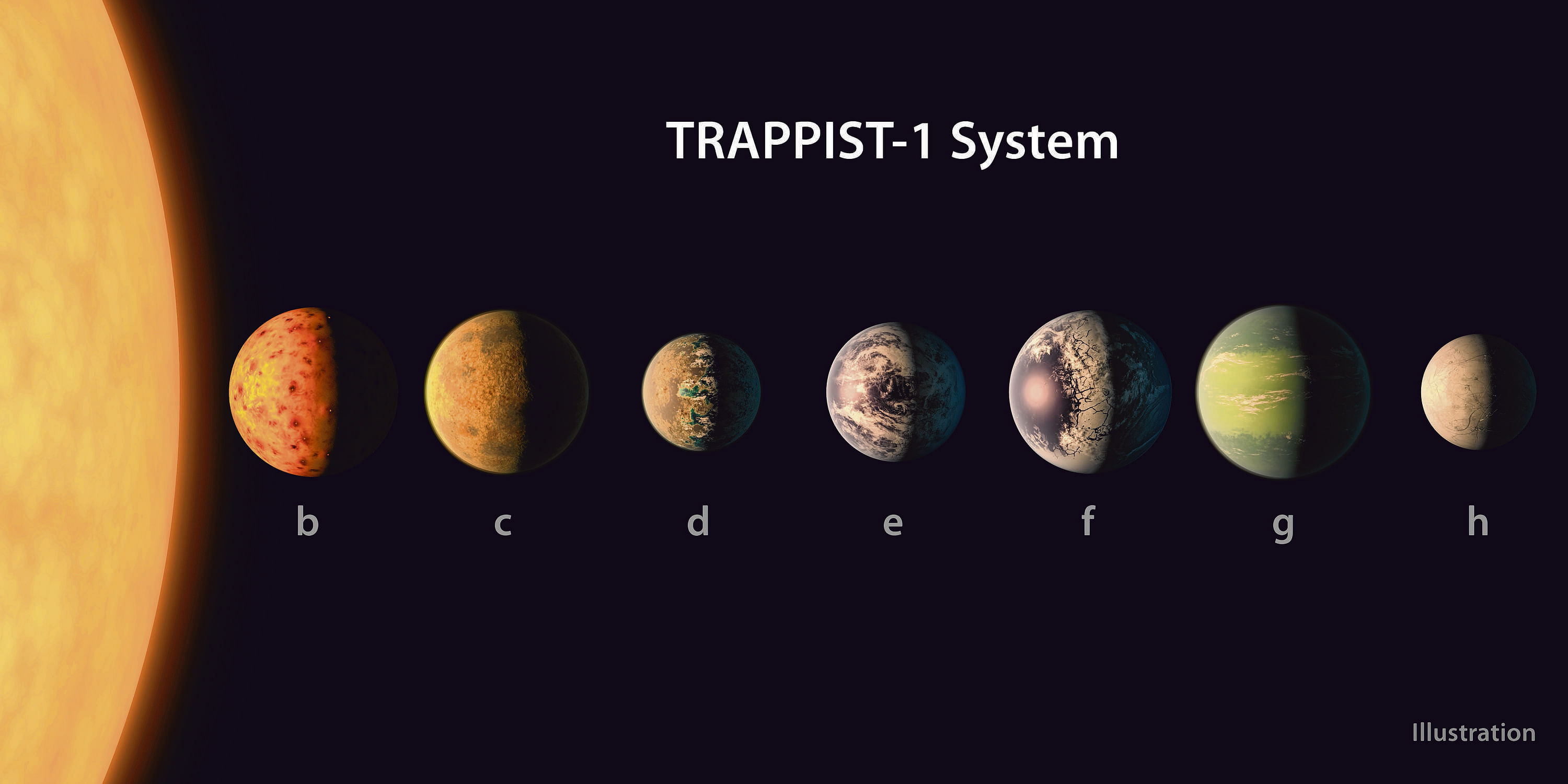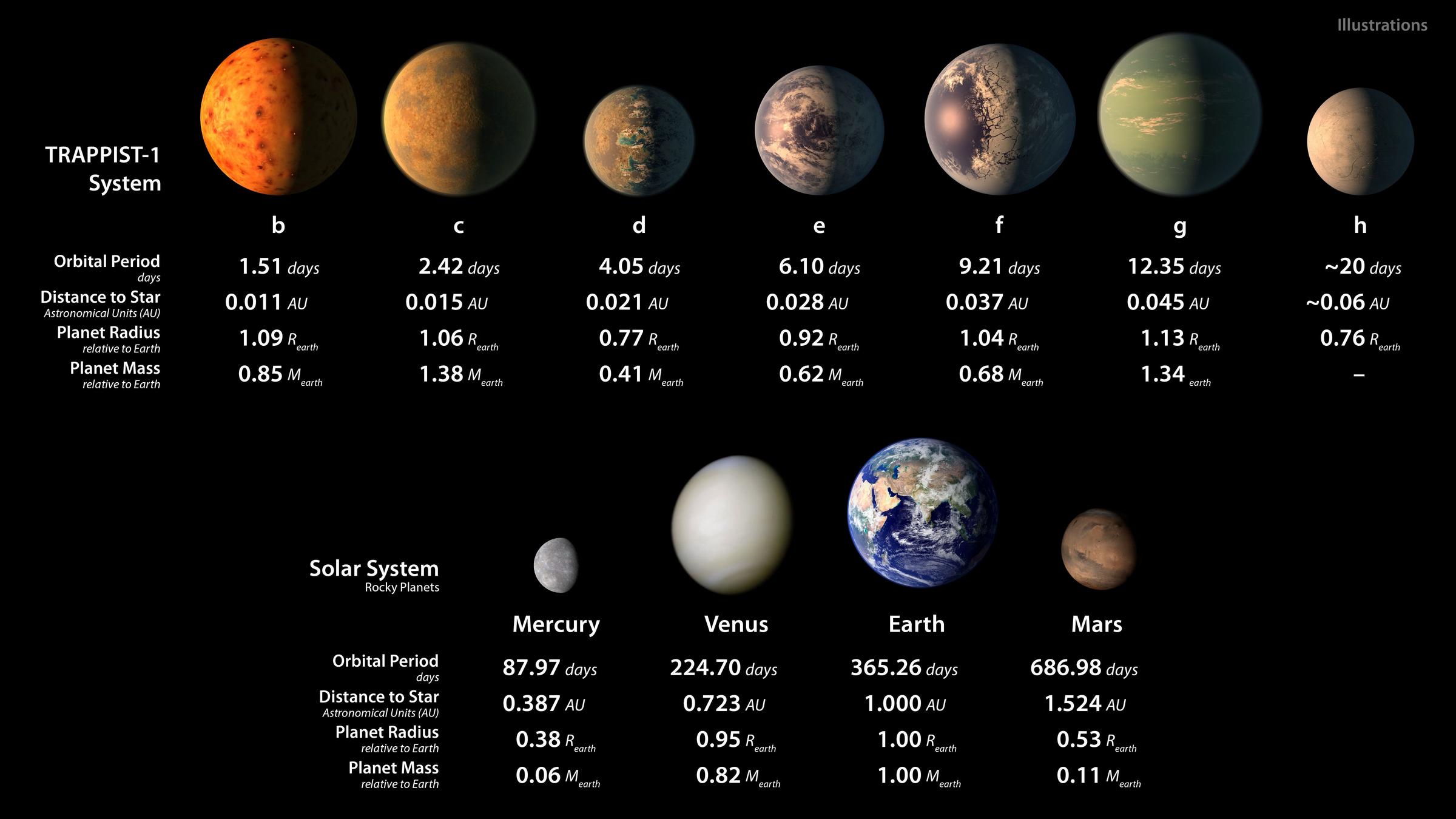Discovery of 7 Earth-size planets where life may be possible: 6 interesting things about them
Sign up now: Get ST's newsletters delivered to your inbox
Astronomers have found a nearby solar system with seven Earth-sized planets, potentially with liquid surface water, raising the prospect of life.
Felicia Choo
Follow topic:
The discovery of seven Earth-size planets has fuelled suggestions of aliens, but much is still unknown about the nearby solar system 40 light-years from Earth.
Three of the planets circle their parent star, known as Trappist-1.
Astronomers at the National Aeronautics and Space Administration (Nasa) published the ground-breaking research in this week's issue of the journal Nature on Wednesday (Feb 22).
One or more of the exoplanets in this new system could be at the right temperature to be awash in oceans of water, based on the distance of the planets from the dwarf star.
Here are 6 things about the planets and their star:
1. What are exoplanets?

The planets are located outside of our solar system, at about 40 light-years (407 trillion km) from Earth.
While it may seem like a very, very far distance, they are actually located relatively close to us, in the constellation Aquarius.
More than 3,500 exoplanets have been discovered since the mid-1990s.
2. There's a chance some planets could be habitable

With the right atmospheric conditions, all seven planets could have liquid water.
However, chances are still highest for the three plants in the habitable zone.
They are also all likely to be rocky based on their densities.
Scientists have yet to derive an estimation of the seventh and farthest exoplanet's mass, but they believe it could be an icy snowball-like world.
The planets are likely to be similar in size as the Earth - give or take 25 per cent in diameter.
3. The star will outlive our sun
Trappist-1 is at least 500 million years old, but its estimated lifespan of 10 trillion years far outpaces the sun, which has around 10 billion years of life.
When the sun runs out of fuel in 5 billion years' time, taking the solar system with it, Trappist-1 will still be an infant star.
The key to Trappist-1's long life? The slow rate at which it burns hydrogen, possibly giving it enough time for life to evolve.
4. How the star got its name
Trappist-1 is named after a robotic telescope, in the Atacama Desert of Chile, which astronomers initially used to study the star.
Trappist is a shortening of the name Transiting Planets and Planetesimals Small Telescope.
Astronomers call the star an "ultracool dwarf". It has only one-twelfth the mass of the sun and a surface temperature of 2287 deg C, much cooler than the 5537 deg C emanating from the sun.
5. The planets are located closer together than those in our solar system

All seven planets' orbits are closer to Trappist-1 than Mercury is to our sun.
Moreover, the planets are also very close to each other, making it possible to look up and see geological features or clouds of neighbouring worlds.
These would sometimes appear larger than the moon in Earth's sky.
The planets' proximity to the star and one another means that they are likely to be tidally locked, just like Earth's moon.
All seven planets are circling the star more quickly than the planets in our solar system. The innermost completes an orbit in just 1½ days, while the farthest one takes about 20 days.

6. Significance of the discovery
This is the first time so many planets of this kind are found around the same star, and astronomers deem the discovery a crucial step towards finding if there is life out there.
Even if they cannot detect life out there, astronomers would be able to learn something more about where life can emerge.
SOURCES: Nasa, Reuters, The Telegraph, New York Times, Washington Post, BBC

